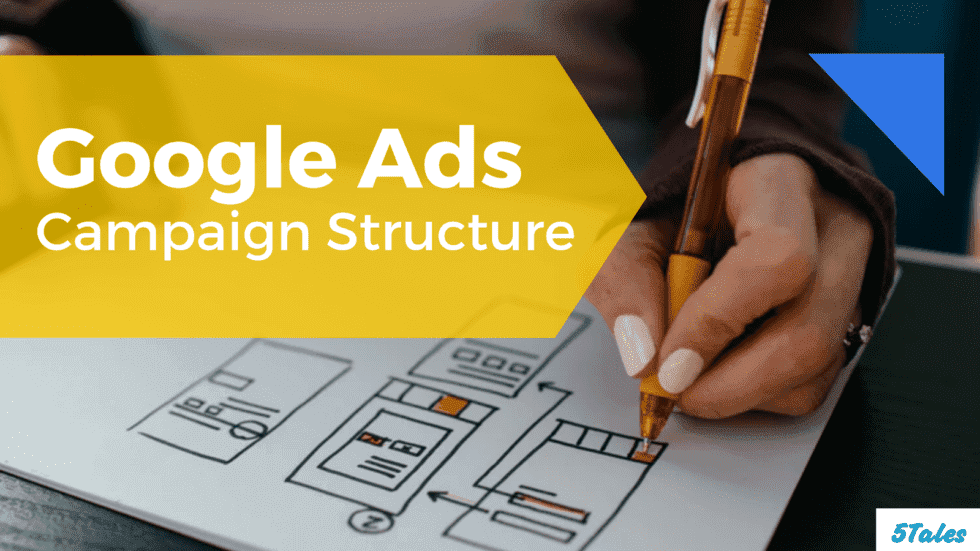Okay, you have created your Google Ads account and are now ready to turn your marketing ideas into profit. But how? It’s one thing to understand how Google Ads work, but it’s a whole other responsibility to develop your campaign structure.
Luckily, we have just the solution for you! In this guide, we’ll be covering Google Adwords campaign structures as well as practices that can help you along the way.
Campaign Structure 101: Content and Ad Groups
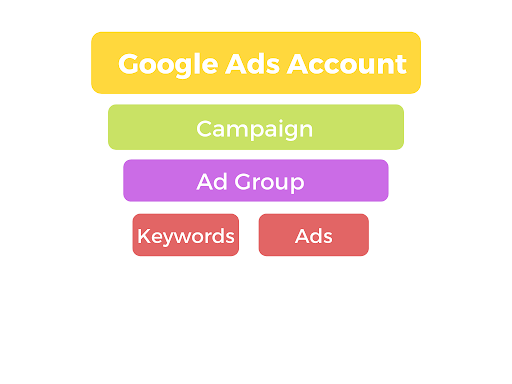 There are five parts to a Google Ads account campaign. Here is a brief overview of each:
There are five parts to a Google Ads account campaign. Here is a brief overview of each:
1. Ad Campaign
Setting up your Google Ads account starts with choosing your campaign type and planning the campaign structure. The right campaign type for you will depend on your online advertising goal. Do you want your ad to get more calls or perhaps generate awareness for your brand? There are different campaign types to satisfy these specific goals. Other parts of your campaign to prepare for include:
- Location
- Language
- Bid Strategy
- Budget
2. Ad Groups
Ad groups are groups of ads that share similar targets. They create structure within the campaign by organising ads by a common theme. In general, it’s practical not to go beyond approximately 20 keywords and 2 to 3 ads per ad group.
3. Keywords
Keywords are one of the most critical aspects of your campaign. Performing keyword research can ensure that the keywords you choose have sufficient search volume. You want to choose keywords that are searched by people who are looking to buy something. Usually, these keywords have qualifying terms, such as brand names and the word “cost”, or location terms. Try using the Keyword Planner within your Google Ads account!
4. Ad Copy
Your ad copy is the part of your campaign that most people see. To make sure your ad copy is conversion-friendly, match the call to action in your ad to the one on your landing page! Find more tips on how to write effective ad copy in our friendly guide.
5. Ad Extensions
Ad extensions are your friends. These can boost your click-through rates at no cost to you! Ad extensions can expand your ad by taking up more space on the results page. They are a foolproof way of giving people more reasons to click by providing useful business data to your ad. There are a variety of ad extensions available, so make sure to research which ones will fit your needs.
Best Practices In Structuring Google Adwords Campaign
Now that you’ve got a good idea of the structure and content of a Google Ads campaign, here are some tips to keep in mind when setting up your campaign:
- Ensure that your campaign structure supports your advertising goal. Create a structure that suits your needs by mapping it to your goals and business objectives.
- Keep your budget in mind. Ensure that you have a large enough budget to sustain your campaigns for the day. Your ads need to be eligible to run throughout the day at the times you set for them.
- Make your ad compelling. Since you pay only when people click on your ads, your ad copy is tasked with attracting potential customers and repelling unqualified prospects so they do not waste your ad budget. This can be a broad task, so let’s break it down bit by bit.
![]()
Getting The Clicks: Making a Compelling Ad
If there’s one primary objective in creating an ad, it’s gaining qualified traffic. More traffic to your landing page means more sales. Additionally, qualified traffic means less money wasted. Most importantly, a high click-through rate (CTR) can boost your Quality Score, effectively lowering the cost per click for your keywords. Is it possible to achieve all of that through your campaign structure? The short answer: yes!
There are four elements to the Google Ads text ads:
- Headline
- Description line 1
- Description line 2
- Display URL
Each part plays an important role in the overall ad copy. So, how can you make your ad take off? Use all of these parts to your advantage:
Headline
The headline is the very first part of the ad people will read. Google will bold the text of the keyword itself so make sure to include it in your headline. Not only does this make your ad more visible, but it also ensures that your ad is relevant. You can have up to 30 characters in your headline so make every letter count. If you can shorten or abbreviate your terms without compromising readers’ comprehension, do so!
Description Lines
The description lines make up the bulk of your ad so try to fit in essential information here. This includes the benefits of your product, service, or brand, social proof, or more details on what you offer. Most importantly, include a call to action.
Display URL
The display URL is easily overlooked in Google advertising. However, it still takes up valuable space in your ad. Our take? Don’t just paste your domain name. Use the Display URL to make your ad stand out by using a call to action or your services!
Top 5 Questions To Ask Yourself For A Profitable Google Ads Campaign
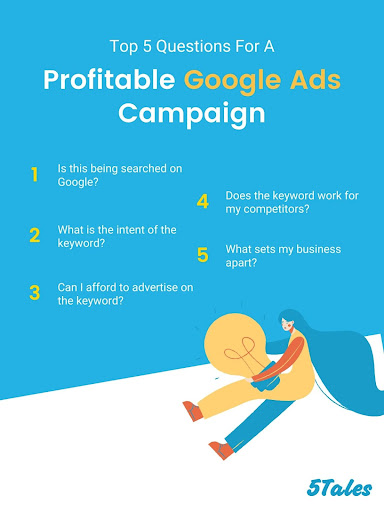
- Is this being searched on Google?
There is no point in advertising a certain keyword if your customers aren’t searching for it. Use a keyword research tool to help you assess the search volume of your keywords and how competitive advertising this would be.
- What is the intent of the keyword?
Are the people who are searching this particular keyword likely to purchase your product or service? Or are they, like many of us, simply looking for answers online? Determine which keywords have high buying intent so your ads are directed at the right people.
- Can I afford to advertise on the keyword?
Unfortunately, not all well-searched keywords will be profitable for you to advertise. Some of the factors like competitors or search intent are out of our hands. You can have a straightforward answer to this question by comparing your max CPC to the estimated keyword CPC in your keyword research tool.
- Does the keyword work for my competitors?
Use a competitive intelligence tool to get an idea of your competitor’s advertising information. If you’re just starting out with a campaign, you’re up against competitors who have already tested and optimised their campaigns. Use this to your advantage and follow up on keywords that they deem are worth advertising. This probably means that the keywords they continue advertising on, generate sales.
- What sets my business apart?
Why should people purchase your service or product over any other option, including nothing? A USP or Unique Selling Proposition answers this question for you. Using a powerful USP can bring in more traffic and conversions, so make sure to listen to what your customers need and use that to leverage a strong USP.
Top 5 Campaign Structures Used In PPC
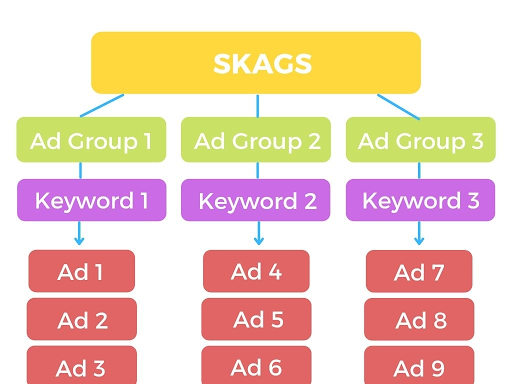
- Hagakure Method
The Hagakure Method is founded on the principle of simplicity. The objective is to make the most simplistic Google Ads campaign structure by collecting the bulk of data right at the campaign level. Smart bidding is commonly used for this method, leaving it up to Google’s algorithms to work for you.
Although this method is quick and easy to set up, the lack of control can be a disadvantage to advertising. If there are irrelevant or bad search terms, it either affects your ad spend or you end up spending a good amount of time to exclude them.
- Single Keyword Alpha/Beta Ad Groups
This single keyword ad group is a valuable campaign structure that can boost CTR and ad relevance by tailoring ad copies to the keyword. The result is a better Quality Score and great control of traffic! This structure uses 2 different campaigns with the same keywords. The only difference is they use different match types: exact match (EM) and broad match modified (BMM) or Phrase match type. The EM campaign is used as the primary campaign. The BMM campaign is used for additional search terms that can later be moved to the exact match keywords campaign.
The cons of this structure are in how data is organised. You could end up with thousands of ad groups, making it difficult to maintain. It will also be more challenging to optimise each ad group. Although this is a rewarding structure, it can be very time-consuming.
- Single Keyword Multi-match Type Ad Groups
This structure only has 1 campaign but uses different match types for the keywords. You can have as few as two match types or as many match types available. It purely depends on how broad you want your campaign to go. The combination of these match types also depends on what you’re aiming for. This type of structure is easier to optimise and good for smart bidding. However, there is less keyword-level control when doing so.
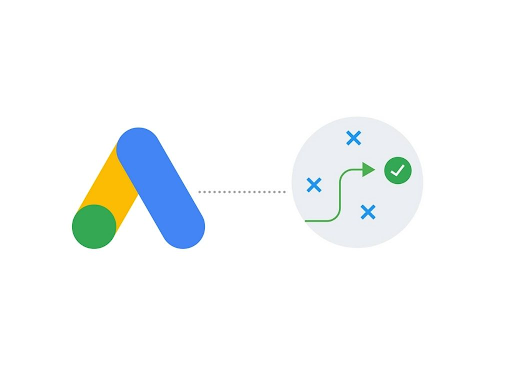
- Theme-Based Ad Groups
This campaign structure can drive more traffic and improve the Quality Score of the ad group and the landing page. It is up to you how you want to split the themes. All keywords under a single ad group have to match the theme. This results in more data on the ad group level, making it easy for smart bidding.
Similar to the Single Keyword Multi-match Type Ad Groups structure, you can lose control on keyword-level due to smart bidding. At the same time, it can be time-consuming to define the themes and to conduct negative keywords.
- Dynamic Search Ads Campaigns
Dynamic search ads are ads that use your website and its content instead of keywords. In this structure, the multiple ad groups are split based on website pages. The content for each webpage of your services is matched with the Google searches. This is all done and populated by Google. Even in the actual ads, you only have to write the descriptions. This campaign structure is easy to create and can increase CTR due to longer headlines. However, you have no control over the headlines, search queries, and page structure.
Achieving Your Vision

If your desired campaign structure is too time-consuming or difficult, don’t let it stop you. With 5tales, we can help you achieve your vision for your Google Ads campaign! Our Google Ads certified specialists will handle every aspect of planning, setting up, running and optimising your campaign. Entrust your business’ Google Ads management to us today.
